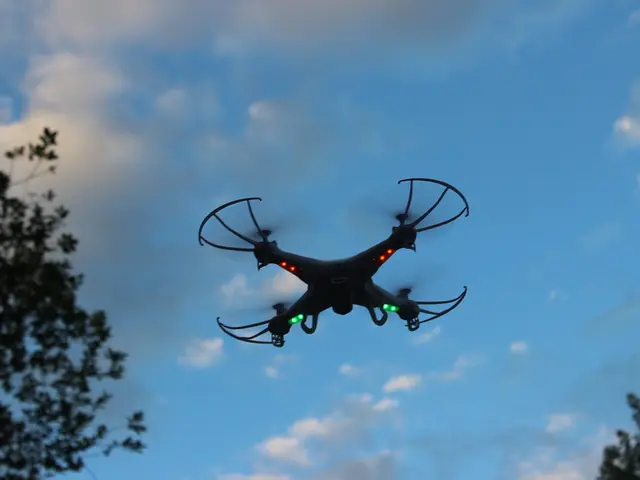Deep Exploration of Network Protection Infrastructure
In the rapidly evolving digital landscape, network security has become a critical cornerstone for businesses and organisations worldwide. As cyber threats continue to evolve, so too must our defences. Here's a glimpse into the trends and future developments in network security technologies and strategies for 2025.
Artificial Intelligence (AI) is increasingly being harnessed to detect, predict, and respond to cyber threats faster and more accurately. This proactive approach allows cybersecurity measures to keep pace with evolving attacks, ensuring businesses stay one step ahead of potential breaches.
The Zero-Trust model is becoming central in 2025. This model assumes no user or device—inside or outside the network—can be trusted by default. Instead, it enforces continuous verification and strict access controls, including least privilege policies and micro-segmentation, to confine breaches and prevent lateral movement. This is especially critical amid widespread remote work and hybrid environments that expand attack surfaces.
As 5G deployment accelerates, securing these networks is a major priority due to their expanded attack surface, risks of data interception, and vulnerabilities inherent in new infrastructure. Robust encryption, strong authentication protocols, and real-time network monitoring are essential to mitigate threats in 5G-enabled connectivity.
The rise of powerful quantum computers threatens current cryptographic protections. Organisations must prepare for post-quantum cryptography by transitioning to cryptographic algorithms resistant to quantum attacks, to prevent future data breaches from decrypted historical data once quantum capabilities mature.
With ransomware and data breaches becoming more sophisticated and business-like, improving incident response capabilities is vital. Organisations must integrate cybersecurity teams with legal, PR, and admin units to respond swiftly and effectively to attacks, including handling ransom demands and minimising downtime.
The proliferation of Internet of Things (IoT) devices, cloud computing, and mobile endpoints dramatically widens network vulnerabilities. Security strategies now encompass protecting a vast array of endpoints such as smart sensors, personal smartphones, and virtual cloud desktops, not just traditional servers.
Cybercrime operates increasingly like legitimate businesses with advanced tools and exploit cycles. Geopolitical tensions fuel state-sponsored attacks for espionage and sabotage, requiring a national security-level mindset in defence strategies.
New attack models, such as Ransomware-as-a-Service (RaaS) and digital supply chain attacks, demand more vigilant monitoring and multi-layered defenses.
In summary, network security in 2025 is characterised by Zero-Trust adoption, AI-driven defences, protection of 5G and IoT infrastructures, preparation for quantum threats, and resilient incident response. Organisations that adopt these technologies and strategies will be better positioned to defend against the complex and rapidly evolving cyber threat landscape.
Understanding the function and potential of network security systems becomes crucial for businesses to stay ahead in the game and counter cyber threats. Wireless Security protocols, such as Wired Equivalent Privacy (WEP), Wi-Fi Protected Access (WPA), and WPA2, encrypt the data transmitted over airwaves and ensure it's securely delivered.
To stay ahead of evolving cyber threats, businesses and organisations must consistently update and upgrade their network security measures. Robust network security systems can help businesses protect sensitive data from cyberattacks, thereby preserving their integrity and credibility.
Businesses that invest in robust network security systems tend to win customer trust and loyalty more effectively. In the digital age, businesses rely heavily on networks for various functions, making network security a critical aspect for sustainable success.
Quantum computers could shatter existing encryption models and create neoteric ones that are virtually unbreakable. Antivirus and Antimalware software need to consistently update and armor against new strains of threats.
Automated Systems, Artificial Intelligence, and Machine Learning play fundamental roles in shaping future network security. The cost of data breaches can be severe, potentially running into millions of dollars and causing a loss of customer trust. Email security strategies can greatly decrease the odds of phishing or malicious attachments penetrating systems.
IoT-based security systems secure not only computers or servers but each connected entity within the organisation. Firewalls are the first line of defence in network security, designed to monitor and control incoming and outgoing network traffic based on predetermined security rules.
In the ever more common remote work settings, Virtual Private Networks (VPNs) are pivotal to safeguarding the data moving across networks. VPNs work by encrypting data and maintaining anonymity, thereby deterring threat actors from accessing sensitive information. Network Segmentation reduces the attack surface by segmenting a network into smaller portions, containing a break if one segment is compromised.
In an age where regulatory authorities are tightening data security and privacy laws, non-compliance could result in hefty penalties. Incorporating machine learning elements can make Intrusion Prevention Systems (IPS) smarter, enabling them to identify and counteract anomalies with increased finesse.
Email Security is crucial to protect sensitive information that flows into and out of an organization, with comprehensive email security applications blocking incoming attacks and controlling outbound messages to prevent data loss.
In conclusion, as we move towards 2025, network security is set to undergo significant transformations. By understanding these trends and developments, businesses can position themselves to navigate the complex and evolving cyber threat landscape with confidence.
- In the evolving digital landscape, the adoption of Zero-Trust models and AI-driven defenses is expected to define network security strategies in 2025, ensuring businesses stay ahead of potential breaches.
- Securing 5G and IoT infrastructures, with robust encryption, strong authentication protocols, and real-time network monitoring, will be crucial to mitigate threats in 5G-enabled connectivity.
- As quantum computers pose a threat to current cryptographic protections, organizations must prepare for post-quantum cryptography by transitioning to algorithms resistant to quantum attacks.
- Automated systems, artificial intelligence, and machine learning will shape future network security, with a need for consistent updates and upgrades to antivirus and antimalware software to combat new strains of threats.
- Email security strategies, including comprehensive email security applications and network segmentation, play a vital role in protecting sensitive information and safeguarding networks in the era of remote work.








